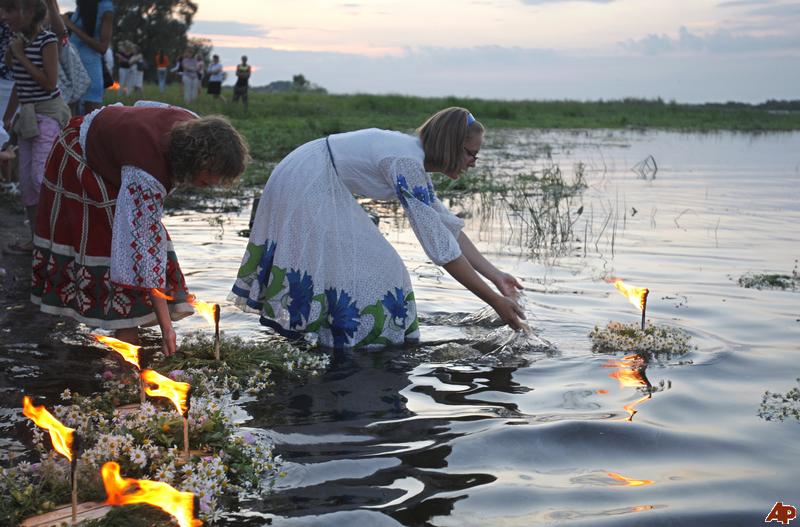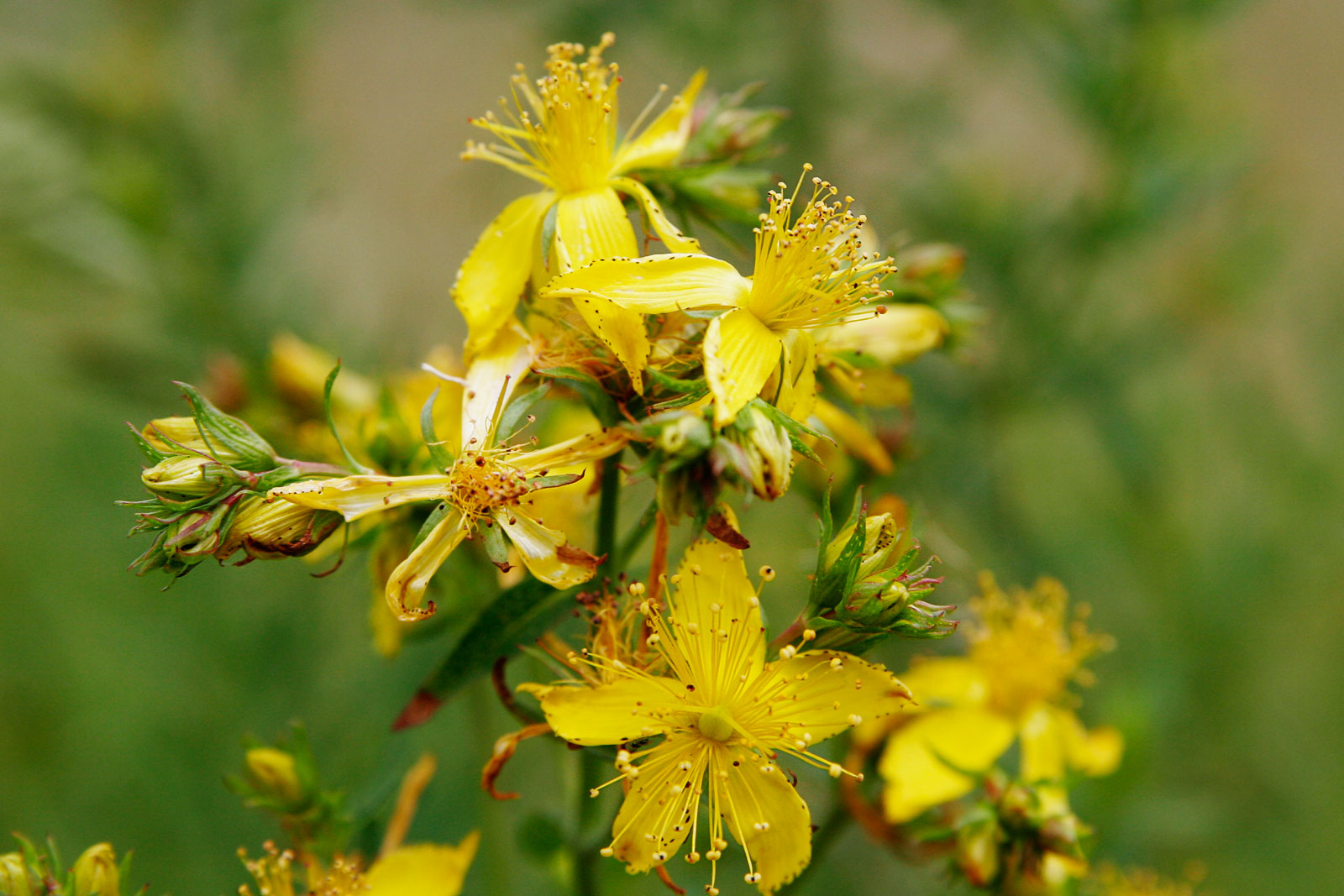Ivan Kupala was the old Russian name for John the Baptist, whose Christian feast coincides with the ancient celebration of Midsummer. Up to the present day, the Russian Midsummer Night (or Ivan’s Day) is known as one of the most expressive Russian folk and pagan holidays.
Many rites of this holiday are connected with water, fertility and purification. The girls, for example, would float their flower garlands and candles on the water of rivers and tell their fortunes from their movement. Boys and girls alike would jump over the flames of bonfires. Nude bathing is likewise practiced. A prominent Ivan Kupala night scene involving nude swimming is featured in Andrei Tarkovsky’s film Andrei Rublev.
There is an ancient Kupala belief, that the eve of Ivan Kupala is the only time of the year when ferns bloom. Prosperity, luck, discernment and power would befall on whoever finds a fern flower. Therefore, on that night village folks would roam through the forests in search of magical herbs and especially the elusive fern flower. In Gogol’s story The Eve of Ivan Kupala, a young man finds the fabulous fern-flower but is cursed by it. Gogol’s tale may have been the stimulus for Modest Mussorgsky to compose his tone poem Night on Bald Mountain.
Traditionally, unmarried women, signified by their garlands on their hair, would be the first to enter the forests. They are followed by young men. Therefore, consequent to the quest in finding herbs and the fern flower may be the blooming of relationships between pairs of men and women within the forest.
In Serbia, Saint John (Sveti Jovan or also called Superman) is known by the name Igritelj (dancer) because it is thought the sun is dancing on this day. Girls will watch the sunrise through a wreath, to become as red (i.e. beautiful, as “red” and “beautiful” share the same root in Slavic languages) as the sun. At dusk, Ivanjske vatre (St. John Fires) are lit, and dancing and singing and drinking take place.


